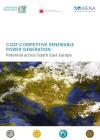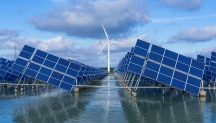

-
-
IRENA, Joanneum Research and University of Ljubljana (2017), Cost-Competitive Renewable Power Generation: Potential across South East Europe, International Renewable Energy Agency (IRENA), Abu Dhabi.
Copied
/-/media/Files/IRENA/Agency/Publication/2017/IRENA_Cost-competitive_power_potential_SEE_2017.pdf
Copied
Cost-competitive renewable power generation: Potential across South East Europe
Newsletter
Renewable energy has long been used in South East Europe, whether as fuelwood for heating or in the form of hydroelectric power generation. More recently, governments from Slovenia to Ukraine have pledged to shift to renewables to replace ageing fossil-based energy installations and reduce carbon-dioxide emissions. Clean, sustainable power sources should drive future economic growth.
This report from the International Renewable Energy Agency (IRENA), prepared in collaboration with regional researchers, aims to support South East European governments in preparing long-term renewable energy strategies.
While non-hydro renewables have previously been treated with caution, falling costs have prompted South East Europe’s policy makers to take a closer look. The region – encompassing the newest European Union (EU) member states and others in the EU-led Energy Community – envisages ambitious targets for 2030.
For more on the region’s abundance of renewable energy resources, see Cost-competitive renewable power generation: Potential across South East Europe.
In January 2017, ahead of the seventh annual IRENA Assembly, heads of delegation from across the region confirmed the intention to scale up renewables in line with the EU’s 2030 Climate and Energy Policy Framework. This commitment is underlined in the Abu Dhabi Communiqué on Accelerating the Uptake of Renewables in South East Europe.




